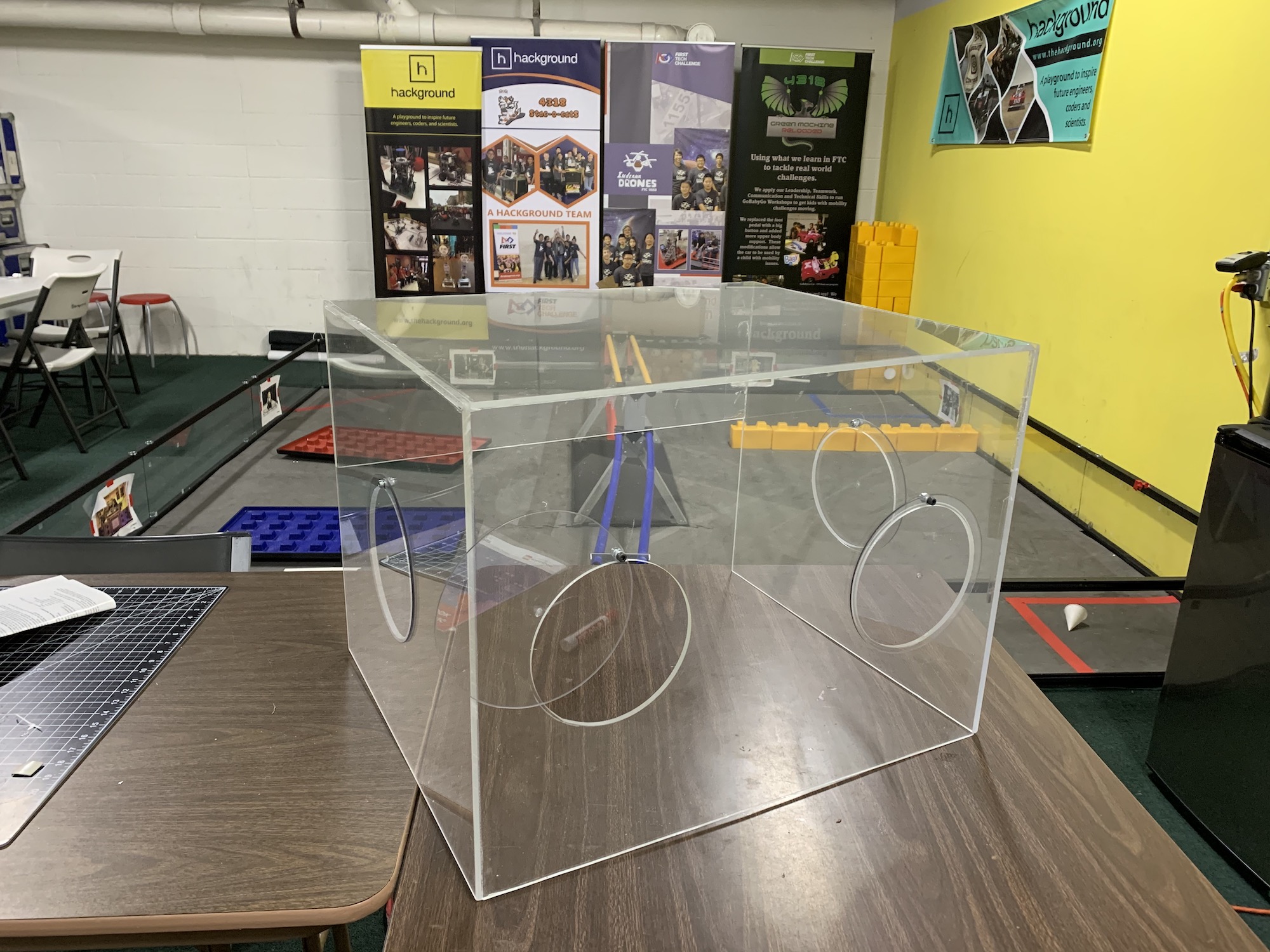The students created an intubation chamber that helps shield medical workers from the coronavirus.
On a normal day, the students at Hackground are busy learning coding and engineering through robotics. But ever since the COVID-19 crisis closed schools, these kids have been busy designing and making personal protective gear. Hackground is a nonprofit organization in Fulton, Maryland, that provides robotics and engineering classes for kids ages K through 12. Most of the year, kids build drones and robots for competitions; but the pandemic has given them a new focus.
According to the CDC, between 10 and 20 percent of patients with COVID-19 are health care workers. Hospitals across the country and Maryland are experiencing shortages of equipment like masks, gowns, gloves and face shields. For the past few weeks, the 3D printers owned by the nonprofit school have been pumping out protective face shields and providing them for free to the local medical community.
Through the process, founding director Prasad Karunakaran received another request: Could they design an intubation chamber that could be used to insulate medical workers from the deadly virus? After creating some rough designs, a team of high school students used Auto CAD to engineer a rectangular chamber. The acrylic box allows a doctor or nurse to shield themselves while placing a tube into a coronavirus patient's throat to help them breathe.

A student works on an intubation chamber prototype, courtesy Hackground
Parents of the students are cutting the acrylic, and the kids will put the chamber together. A doctor or nurse will be able to put their arms through holes on the sides of the chamber and have an obstructed view to place the tube without being exposed to bodily fluids. The chamber costs about $350 to produce and has the possibility to be sterilized and reused. A team is also working on another version made with PVC pipe and a clear vinyl that would provide more flexibility than acrylic.
Hackground plans to donate the shields and intubation chambers to anyone who needs them—from hospitals to nursing homes. The personal protective equipment products have given Hackground’s students something to keep busy during the quarantine while helping their community.
“That is the most important thing," says Karunakaran. “The bottom line is this the project is teaching the kids how to do things that make an impact. They are also learning that you can’t do big things on your own, that great things are done as a team.”
The students have been sharing documents and designs over email and conducting meetings via Zoom. The same team of students has developed an isolation booth that can be used at testing stations or for executing deliveries at retail stores or restaurants. They have also reached out to the local business community to develop web ordering apps and help out with social media marketing. Hackground also plans to upload the designs onto the organization’s website so others can make their own.
Hackground has spent around $1500 on supplies to print face shields and begin building the intubation chamber. Karunakaran says they would like to build chambers for anyone who wants to, but they need some help paying for materials. You can also visit the group’s COVID-19 page to learn more about the projects and donate to the cause.
